#pathfinder monster
Text

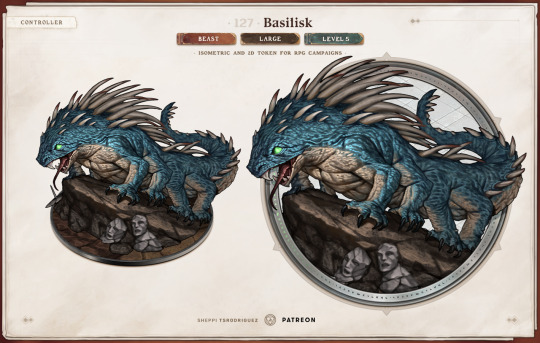
⚔️ Basilisk on Patreon
-
🌟 Get access to more than 200 creatures, maps and assets by supporting us on Patreon! Complement your campaigns with hi-res monster tokens and start building the adventure of your dreams with our isometric assets 🏰!
#art#digital art#dnd#pathfinder#foundryvtt#dungeons & dragons#dnd creature#illustration#pathfinder monster#fantasy monster#beast#level 5#basilisk#lizard#reptile
45 notes
·
View notes
Text
Radical Races: Boggards.
Source: Monster Codex.
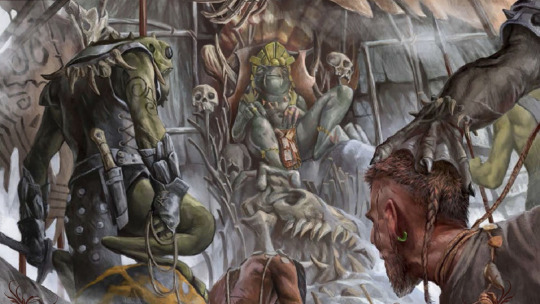
Image source: Monster codex, Pg. 6.
“Living in soggy, disease-ridden marshes, Boggards are often isolated from other humanoids— a condition that breeds suspicion of foreign visitors, ideas, and technology.”
Boggards are viewed by outsiders as simple frog-people, wallowing in muck and believing in dim-witted superstition. This false perception makes Boggards all the more mysterious, as they have developed complex hierarchal societies within their swampland territories. They have a strict caste-based society, with whole groups of artisans, priests, and Spellcasters working under the rule of the Priest-King and his brood.
Lowly Beginnings. Boggards begin their lives as eggs in a frothy clutch, protected by caretakers in the tribe’s gestation pools. After growing sufficiently, they chew their way out of their eggs and begin feasting on whatever their lay eyes on— including slow or weak siblings. Over the course of a few months, Boggards begin to stand on legs rather than tails, and drag themselves out of the pools. This doesn’t automatically grant them any kind of citizenship, as the ruthless caretakers are quick to cut down any weak or dim-witted spawn.
No boggard younglings receive special treatment, except for a small percentage; The Priest-King’s children. They are fed highly toxic concoctions of blue dragonflies and other mushy ingredients, which alchemically changes them. Those that end up surviving this process become stronger than other Boggards, capable of spellcasting and highly intelligent. These spawn are destined to take their place in the upper castes of Boggard Society.
Younglings receive very little care or protection in their formative years, as dozens of individual children are watched by elder warriors. All Boggards learn the same basic lessons of athletics, fighting prowess, and obedience to their higher-ups.
Coming of age. Once they become old enough, younger members of Boggard society participate in a month-long ritual. During this time, they are abandoned by the tribe and sent out into the world. If they can return with the corpse of a sentient humanoid, they are celebrated as members of the tribe and honored by the Priest-King. Those that fail or show weakness become a part of the celebratory feast.
The manner of being a Boggard brings back, combined with their heritage, determines a Boggard’s place in the tribe. Those who bring down weak or elderly humanoids are destined to be laborers, while Boggards that slay powerful warriors or priests could become guardians or shamans.
Divine Right. Priest-Kings are often gluttonous, growing to such extreme sizes they seem to be an entirely different species. They reside in their temples and ponder their station, often utilizing magic gifted to them by the Boggards’ dark gods to control their lessers. They use this formidable magic and their terrible size to cement the gap between rulers and servants, ensuring all in the tribe know their place below the king.
When a priest-king dies, all of his living brood are able to compete for the throne. Oftentimes this means an heir must slaughter their siblings in ritual combat, meaning their is only ever one Boggard royal at a time. Priest-Kings, regardless of their gender, hold the same station, and rarely officially recognize mates as royalty.

A Boggard priest-King. Monster codex, pg. 15.
Competitive Society. Boggards are extremely fertile, and their culture pushes them to foster as many spawn as resources can provide for. Habitual cannibalism balances this practice, as any weak or underperforming members of the tribe are swiftly consumed to provide nutrition for stronger members.
In addition to their need to thrive within their society, Boggards are highly adaptable and capable in living in a variety of wet environments. Most Boggards prefer the climates of marshes and swampland, but tribes can also be found in rainforests and coastlines, where the Boggards swiftly evolve to fit their respective environments.
Boggard settlements are carefully planned out, and built directly into the environment. They are often organized in a way to enforce the hierarchy— the Priest-King’s temple rises up in the center of a settlement, with different class-based zones radiating out in rings around it. A member’s status dictates where their home is; Higher-ranking Boggards live on mounds closer to the home of the Priest-King. Most Boggards prize their homes, and decorate them with whatever shells or sparkly baubles they can find in the area.
Might Makes Right. Boggards value warriors and strength above all else, but there is room in their society for other roles. Hunting and gathering is their main form of obtaining resources, and most crafts are simple tools or decorations. Boggards believe that if an individual can take and defend something, it is their natural right to have it. As such, whatever Boggards do not have the skill to craft, they will steal from nearby civilizations.
Boggards prize their philosophies, believing that it is the responsibility of the weak to provide for the strong and that transformation and change is key to survival. Weaker members of society are usually eaten, and their possessions granted to whoever claims it.
Boggards believe adaptability is a necessity of life, and as such are enamored by any feat of transformation. In particular, magic that changes the form of its wielder is fascinating to Boggard, and adventurers can immediately pacify a Boggard war band with a sufficient feat of magical transformation.
Ideas for using Boggards in a Campaign:
The party encounters a group of seemingly weak and sickly Boggards. They are a collective of exiles deemed unfit to eat by their tribe, and banished. They offer the party access to the Tribe’s riches if the party will kill the oppressive Priest-King that banished them.
A pair of Boggard scouts is tailing the Party, subtly observing them and preparing to report them to the tribe.
The party interrupts a Boggard hunting party, who decide that a group of adventurers would be much more impressive prey than their former quarry. The party is now being hunted down through a trap-filled swamp.
The party are brought before the Priest-King and his court of spellcasting advisors. The court refuses to speak anything but Boggard, or to bring out any translators, so the purpose of this meeting is unclear. The situation appears to be either some sort of trial, a diplomatic discussion, or the court deciding whether to eat the party.
Much like the cycles of transformation they revere, Boggards are unpredictable and powerful. Do not underestimate this race, as many adventurers do.
I personally find Boggard culture fascinating; Their complex caste system based on personal achievements, their unique relationship to divine magic, and their values of usefulness and strength are remarkable!
Another interesting aspect of Boggard culture, one which I haven’t mentioned in this entry, is their relationship to the Demon Lord Gogunta. She is considered to be a Boggard queen, and blesses many of their Priest-Kings with unholy powers. Perhaps she will get her own entry soon…
- A Weird Warlock.
#pathfinder#d&d#pathfinder monster#wowieweirdwarlock#ttrpg#pathfinder lore#boggards#WWW: Radical Races
3 notes
·
View notes
Text


A being born from the fey and the storm incarnated, bound to a cold iron tree for a century as punishment, now free once again- Willing to make up for the time lost.
Say hello to the new character in town! Its name is Borrasca (it/any) and they've been quite fun to design. It's an air elemental/eladrin, with some ghostly vibe because being sapped for your life juice for 100 years kinda does that to you. Borrasca is tricky and mischievous, and will absolutely haunt you enemies for a churro
#dnd#dungeons and dragons#pathfinder#eladrin#elf#fantasy art#genasi#air genasi#ghost#undead#character design#sygdomthings#syg2024#character art#original character#monster#terato#faerie#fae#sorcerer
703 notes
·
View notes
Text

commission for AcornBot!
1K notes
·
View notes
Text
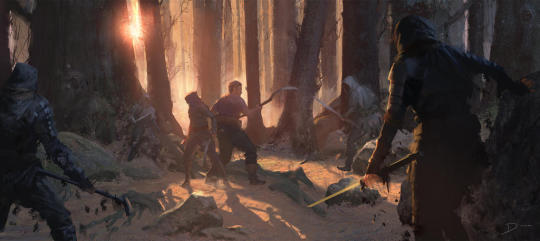
Monsters Reimagined: Bandits
As a game of heroic fantasy that centers so primarily on combat, D&D is more often than not a game about righteous violence, which is why I spend so much time thinking about the targets of that violence. Every piece of media made by humans is a thing created from conscious or unconscious design, it’s saying something whether or not its creators intended it to do so.
Tolkien made his characters peaceloving and pastoral, and coded his embodiment of evil as powerhungry, warlike, and industrial. When d&d directly cribbed from Tolkien's work it purposely changed those enemies to be primitive tribespeople who were resentful of the riches the “civilized” races possessed. Was this intentional? None can say, but as a text d&d says something decidedly different than Tolkien.
That's why today I want to talk about bandits, the historical concept of being an “outlaw”, and how media uses crime to “un-person” certain classes of people in order to give heroes a target to beat up.
Tldr: despite presenting bandits as a generic threat, most d&d scenarios never go into detail about what causes bandits to exist, merely presuming the existence of outlaws up to no good that the heroes should feel no qualms about slaughtering. If your story is going to stand up to the scrutiny of your players however, you need to be aware of WHY these individuals have been driven to banditry, rather than defaulting to “they broke the law so they deserve what’s coming to them.”
I got to thinking about writing this post when playing a modded version of fallout 4, an npc offhndedly mentioned to me that raiders (the postapoc bandit rebrand) were too lazy to do any farming and it was good that I’d offed them by the dozens so that they wouldn’t make trouble for those that did.
That gave me pause, fallout takes place in an irradiated wasteland where folks struggle to survive but this mod was specifically about rebuilding infrastructure like farms and ensuring people had enough to get by. Lack of resources to go around was a specific justification for why raiders existed in the first place, but as the setting became more arable the mod-author had to create an excuse why the bandit’s didn’t give up their violent ways and start a nice little coop, settling on them being inherently lazy , dumb, and psychopathic.
This is exactly how d&d has historically painted most of its “monstrous humanoid” enemies. Because the game is ostensibly about combat the authors need to give you reasons why a peaceful solution is impossible, why the orcs, goblins, gnolls (and yes, bandits), can’t just integrate with the local town or find a nice stretch of wilderness to build their own settlement on and manage in accordance with their needs. They go so far in this justification that they end up (accidently or not) recreating a lot of IRL arguments for persecution and genocide.
Bandits are interesting because much like cultists, it’s a descriptor that’s used to unperson groups of characters who would traditionally be inside the “not ontologically evil” bubble that’s applied to d&d’s protagonists. Break the law or worship the wrong god says d&d and you’re just as worth killing as the mindless minions of darkness, your only purpose to serve as a target of the protagonist’s righteous violence.
The way we get around this self-justification pitfall and get back to our cool fantasy action game is to relentlessly question authority, not only inside the game but the authors too. We have to interrogate anyone who'd show us evil and direct our outrage a certain way because if we don't we end up with crusades, pogroms, and Qanon.
With that ethical pill out of the way, I thought I’d dive into a listing of different historical groups that we might call “Bandits” at one time or another and what worldbuilding conceits their existence necessitates.
Brigands: By and large the most common sort of “bandit” you’re going to see are former soldiers left over from wars, often with a social gap between them and the people they’re raiding that prevents reintegration ( IE: They’re from a foreign land and can’t speak the local tongue, their side lost and now they’re considered outlaws, they’re mercenaries who have been stiffed on their contract). Justifying why brigands are out brigading is as easy as asking yourself “What were the most recent conflicts in this region and who was fighting them?”. There’s also something to say about how a life of trauma and violence can be hard to leave even after the battle is over, which is why you historically tend to see lots of gangs and paramilitary groups pop up in the wake of conflict.
Raiders: fundamentally the thing that has caused cultures to raid eachother since the dawn of time is sacristy. When the threat of starvation looms it’s far easier to justify potentially throwing your life away if it means securing enough food to last you and those close to you through the next year/season/day. Raider cultures develop in biomes that don’t support steady agriculture, or in times where famine, war, climate change, or disease make the harvests unreliable. They tend to target neighboring cultures that DO have reliable harvests which is why you frequently see raiders emerging from “the barbaric frontier” to raid “civilization” that just so happens to occupy the space of a reliably fertile river valley. When thinking about including raiders in your story, consider what environmental forces have caused this most recent and previous raids, as well as consider how frequent raiding has shaped the targeted society. Frequent attacks by raiders is how we get walled palaces and warrior classes after all, so this shit is important.
Slavers: Just like raiding, most cultures have engaged in slavery at one point or another, which is a matter I get into here. While raiders taking captives is not uncommon, actively attacking people for slaves is something that starts occurring once you have a built up slave market, necessitating the existence of at least one or more hierarchical societies that need more disposable workers than then their lower class is capable of providing. The roman legion and its constant campaigns was the apparatus by which the imperium fed its insatiable need for cheap slave labor. Subsistence raiders generally don’t take slaves en masse unless they know somewhere to sell them, because if you’re having trouble feeding your own people you’re not going to capture more ( this is what d&d gets wrong about monstrous humanoids most of the time).
Tax Farmers: special mention to this underused classic, where gangs of toughs would bid to see who could collect money for government officials, and then proceed to ransack the realm looking to squeeze as much money out of the people as possible. This tends to happen in areas where the state apparatus is stretched too thin or is too lighthanded to have established enduring means of funding. Tax farmers are a great one-two punch for campaigns where you want your party to be set up against a corrupt authority: our heroes defeat the marauding bandits and then oh-no, turns out they were not only sanctioned by the government but backed by an influential political figure who you’ve just punched in the coinpurse. If tax farming exists it means the government is strong enough to need a yearly budget but not so established (at least in the local region) that it’s developed a reliably peaceful method of maintaining it.
Robber Baron: Though the term is now synonymous with ruthless industrialists, it originated from the practice of shortmidned petty gentry (barons and knights and counts and the like) going out to extort and even rob THEIR OWN LANDS out of a desire for personal enrichment/boredom. Schemes can range from using their troops to shake down those who pass through their domain to outright murdering their own peasants for sport because you haven’t gotten to fight in a war for a while. Just as any greed or violence minded noble can be a robber baron so it doesn’t take that much of a storytelling leap but I encourage you to channel all your landlord hate into this one.
Rebels: More than just simple outlaws, rebels have a particular cause they’re a part of (just or otherwise) that puts them at odds with the reigning authority. They could violently support a disfavoured political faction, be acting out against a law they think is unjust, or hoping to break away from the authority entirely. Though attacks against those figures of authority are to be expected, it’s all too common for rebels to go onto praying on common folk for the sake of the cause. To make a group of rebels worth having in your campaign pinpoint an issue that two groups of people with their own distinct interests could disagree on, and then ratchet up the tension. Rebels have to be able to beleive in a cause, so they have to have an argument that supports them.
Remnants: Like a hybrid of brigands, rebels, and taxfarmers, Remnants represent a previously legitimate system of authority that has since been replaced but not yet fully disappeared. This can happen either because the local authority has been replaced by something new (feudal nobles left out after a monarchy toppling revolution) or because it has faded entirely ( Colonial forces of an empire left to their own devices after the empire collapses). Remnants often sat at the top of social structures that had endured for generations and so still hold onto the ghost of power ( and the violence it can command) and the traditions that support it. Think about big changes that have happened in your world of late, are the remnants looking to overturn it? Win new privilege for themselves? Go overlooked by their new overlords?
Art
#monsters reimagined#bandits#dnd#dungeons and dragons#d&d#ttprg#pathfinder#heavy topics#monsters reimagined
1K notes
·
View notes
Text
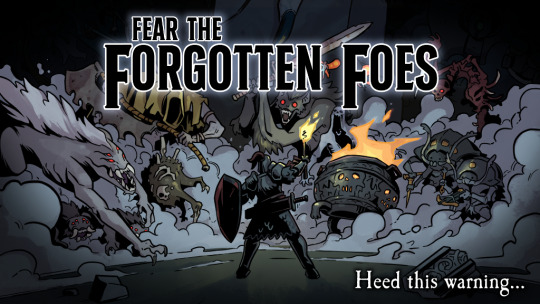
Fear the Forgotten Foes coming to Kickstarter!
Fear the Forgotten Foes is joint effort between Ben Fleuter and me, a project that followers of my blog are probably very aware of.
Be ready for the official spiritual successor to my "Horrors of the Dark" (Darkest Dungeon Monster Manual) to bring you 150 new monsters each featuring high quality artwork and gripping lore!
Visit the prelaunch page and hit that follow button to be the first one to know when this project goes live!
234 notes
·
View notes
Text

Blue
815 notes
·
View notes
Text
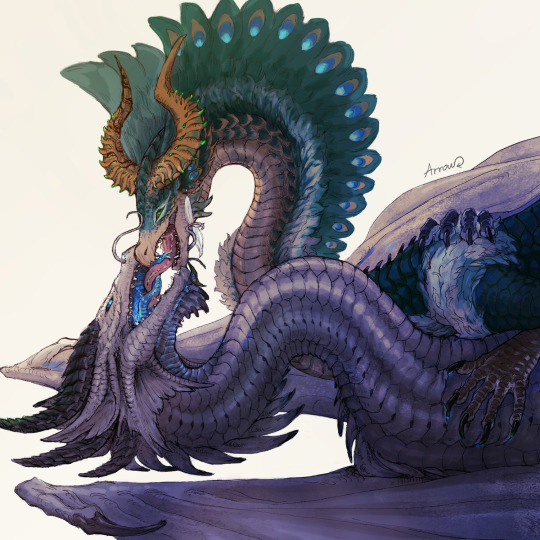
Dare
My oc couple Rimerock (silver, he/him) and Larksharius (green, they/them)
#oc: larksharius#oc: rimerock#ship: alrakis#my ocs#my art#ockiss24#dragon#dragon art#silver dragon#dragons#pathfinder#pathfinder art#dnd#dnd dragon#dnd art#fantasy creature#creature art#creature#creature design#monster#monster art#artists on tumblr#oc#art#digital art#scalie#oc kiss week#ockissweek#valentines day
261 notes
·
View notes
Text

Big fish 🦈 or seal... or shark?
233 notes
·
View notes
Text
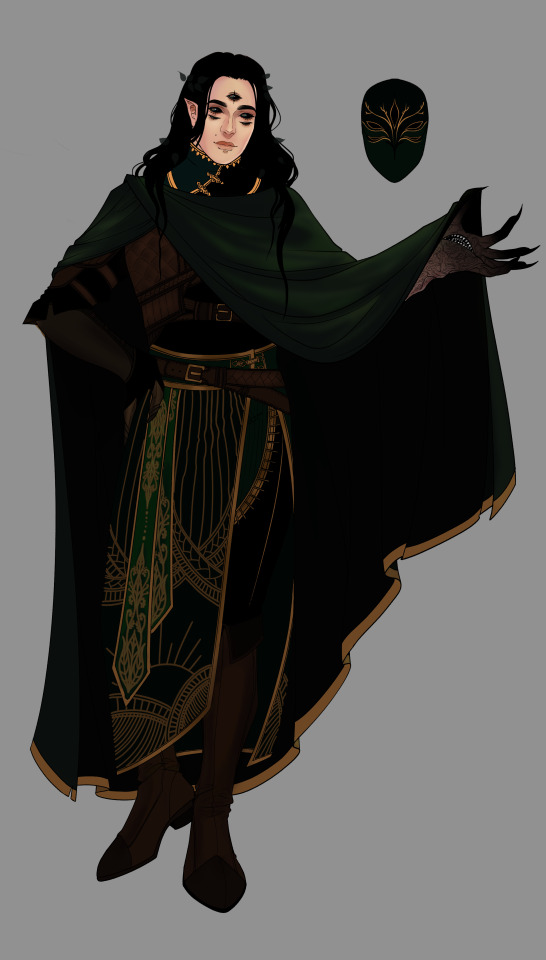

I love my monster son who only gets weirder the longer you know him.
#my art#art#character art#dungeons and dragons#fantasy art#pathfinder#monster boy#monster#monster art#druid#dnd druid
433 notes
·
View notes
Text
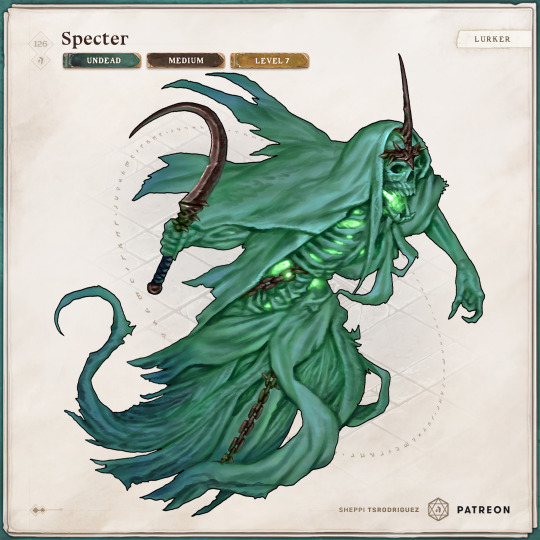

⚔️ Specter on Patreon
-
🌟 Get access to more than 200 creatures, maps and assets by supporting us on Patreon! Complement your campaigns with hi-res monster tokens and start building the adventure of your dreams with our isometric assets 🏰!
#art#digital art#dnd#pathfinder#foundryvtt#dungeons & dragons#dnd creature#illustration#pathfinder monster#fantasy monster#specter#ghost#undead#level 7
36 notes
·
View notes
Text
ok im actually really curious now
obligatory please reblog for a bigger sample size ect ect
edit: by occasionally i just mean you started as player and have continued to both DM and play
extra edit idk how ppl are missing it: it u started as a player and continue to both play AND dm use the "started as a player and occassionally DM" and if u started as a dm and continue to both play and DM choose " first time playing was dm and i have dmd since" the point of this is to gauge how many peoples first game was as DM vs how many ppls first game was as a player and how many people continue to play only one specific role, never play that role again, or play both roles for any given amount of time
539 notes
·
View notes
Text

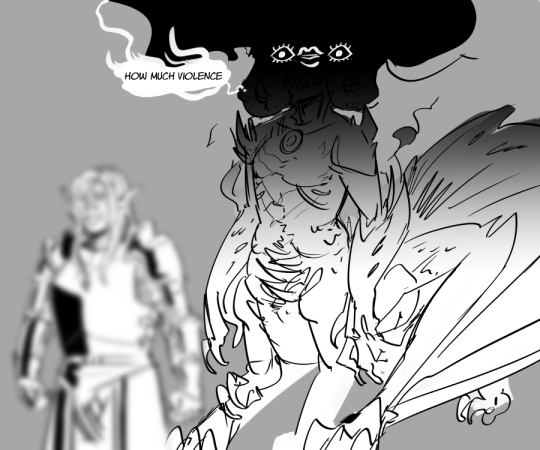
When Unstoppable Force (the party's drow paladin) meets a bigger, scarier Unstoppable Force (some weird dragontaur hunting them for sport)-
Last session was fun!
#dnd#dnd art#dnd comic#dnd meme#dnd memes#comic#sygdomthings#syg2024#monster#drow#dark elf#paladin#meme#memes#dragontaur#centaur#xigg'xass#ttrpg#pathfinder#art#sketch#doodle
457 notes
·
View notes
Text
As of today, we are releasing the February 29th, 2024 version of the Eureka: Investigative Urban Fantasy full prerelease rulebook FOR FREE.

If you’re wondering what Eureka: Investigative Urban Fantasy even is, it’s going to Kickstarter starting April 10th, 2024, and, besides downloading the free version we are releasing today, the Kickstarter link is probably the best way to learn what you can expect from it.
As a thank-you to all of those who have supported us with follows, reblogs, likes, and word-of-mouth, we are replacing the cut-down free demo version of Eureka: Investigative Urban Fantasy that has been available on our website with the full February 29th prerelease version of the rulebook. If you’ve only looked at the demo version, this is huge for you. Four months of constant additions, improvements, playtesting, polishing, and tweaking, plus access to all of the things that were redacted from the original demo version, including rules for handling explosives, advanced melee combat rules, and five fully playable man-eating monsters—and Eureka handles playing monstrous PCs in a way you’ve never seen before! This isn’t just +1 to strength and +2 extra damage taken from silver weapons, playing a monster in Eureka is a whole different experience from playing a mundane PC!
Download the free full prerelease version now from our website!
If you like it, consider giving us a tip on Ko-fi, or the pay-what-you-want version on itch.io! (At the time of writing this, the pay-what-you-want version is not actually set up yet, so your best bet is to get the free version from our website and give us a little donation on ko-fi.)
All subsequent updates to the prerelease version will continue to be exclusive to patreon subscribers; for only $5 you can get the regularly updated prerelease version of Eureka: Investigative Urban Fantasy as well as many other in-progress projects such as adventure modules and literary works!
And don’t forget, Eureka is fundraising on Kickstarter starting on April 10th, 2024! We need your support there most of all, to make sure we hit our goals and can afford to make the best version of Eureka we can make!
Interested in branching out but can’t get your group to play anything but D&D5e? Join us at the A.N.I.M. TTRPG Book Club, where we nominate, vote on, and play indie TTRPGs, all organized by our team with no strict schedule requirement! Here's the invite link! See you there!

#eureka: investigative urban fantasy#eureka#rpg#monsters#coc#allied forces#roleplaying#tabletop#ttrpg#tag#dnd#dnd5e#d&d 5e#dnd 5e#5e#dungeons and dragons#pathfinder#ttrpgs#ttrpg tumblr#ttrpg art#indie ttrpg#ttrpg community#ttrpg design#indiegames#indie#indie games#indie game#indie designer#free rpg#fantasy rpg
244 notes
·
View notes
Text
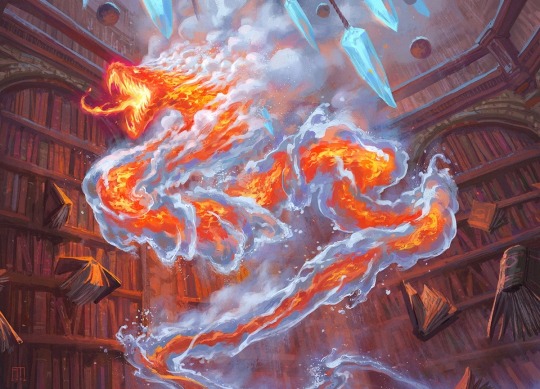
Monster Hunt: Roilwreak, Temperamental Elemental
WHATS SHAKING YOU WIZARD BITCHES, GUESS WHO BROKE CONTAINMENT AGAIN?? THAT'S RIGHT, ITS MEEE!!!
Beginning life as an apprentice's over ambitious and much procrastinated thesis project, this arcane entity has entered into a troubled adolescence marked by making itself a calamitous nuisance. Being a Weird ( an elemental composed of two contradictory natures) Roilwreak is possessed by a destructive restlessness that only seems to find an outlet in causing problems for others, whether it be in property damage, petty arson, or the disarray of arcane workings for the sheer shit-disturbing fun of it.
Adventure Hooks
Roilwreak spends most of its time in a warded enclosure on the grounds of the academy in which it was summoned, tended to by apprentices and occasional studied for its unique ability to interfere with different kinds of magical energy. There's a rumour that upperclassmen (and even faculty) sometimes sneak in after hours to bargain with the elemental in order to fuel their more elaborate rituals.. which might be how the Weird managed to escape this time. Pheraps the homebrew potion dregs and scraps of firecrackers from the nearby market can point at a suspect.
The elemental has given the academy the slip and disapeared into the city's pipeworks, resulting in minor flooding as pipes crack under unexpected pressure and a number of injuries as a pubic fountain boiled off into scalding mist. The local garison have put a bounty out for whoever can slay the elemental, but the academy just want it returned safely. It IS a sapient creature after all, and it can't help that chaos is in it's nature.
A villainous mage has heard of the Weird's powers and wants to make use of them, binding Roilwreak into a weapon or draining off its energy for some awful ritual. Having organized an infiltration (or perhaps the current breakout) it's a race to see who can catch the hyper-charged herptile first.
#elemental#seeking power#wizard#mid level#low level#mystery#dnd#dungeons and dragons#d&d#ttprg#pathfinder#monster hunt#arcane
211 notes
·
View notes
Text


A couple of monster girls for @thecreaturecodex! Meet Jade Seven and Ada Shorewalker, a knowledge hungry gorgon and a selkie who loves life beyond the waves… and if you’d like to meet them in your future Pathfinder games, stay tuned with thecreaturecodex, for original statblocks and details on their stories to come, as well as all sorts of other cool custom creature stats :)
944 notes
·
View notes